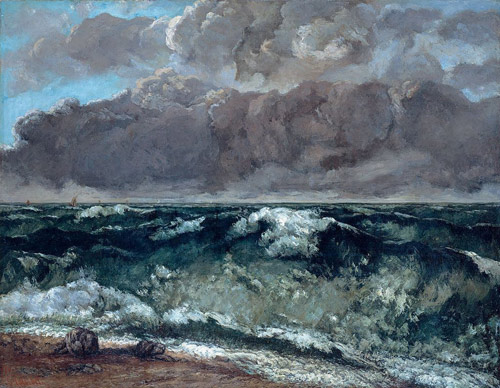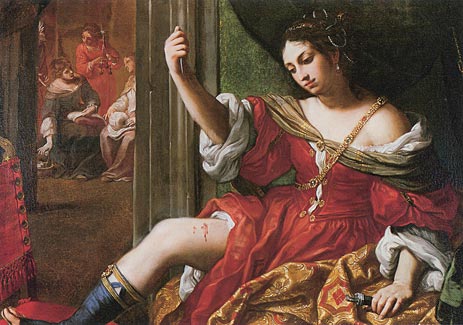Forget in Ten Parts is a ten-part weekly series by AFC's Curatorial Fellow, Guy Forget, focusing on the aesthetics of impermanence. For the penultimate post in the series, the topic is painting and contemporary art in general. (Illustrated.)
1. As reader Ciao Fern astutely observed, in response to an earlier post in this series: “Isn’t this too old and too 20th century?” That post was and so is this one.
2. The Lamentation: I wish there were more things to contemplate. It might have something to do with being in NYC, where art — the best new art — is presented as commerce. (There are always exceptions.) Sure, museums are great — wait, they're not that great. Some of them are, but not the ones showing relatively new work. If for no other reason (there are other reasons, but let's pretend), and through no fault of their own, they are tourist destinations, which is the opposite of a contemplative space. I'd rather meet them half-way and go to Applebee's in Times Square, at least hang out with them without the art complicating things.
As Donald Judd wrote, “A bad location doesn't ruin a good work but it tends to reduce understanding to information: you know it's good but you can't stand standing there long enough to find out why.” Most of the time art seems a lot like information.
3. Paintings, made with care, are things you don't see much of. As far as I can tell, contemporary painting is mostly a means to an end, as opposed to a way towards opening up to something.
Judd also thought that illusionistic painting, as a representation of pictorial space — where the implication is that the image continues outside of the canvas — was a relic of the past. Painting, if it was to have any relevance to him (and by extension, the art of his time), was to be a thing-in-itself, a Specific Object. Its qualities would be real. The red didn't represent some other red, it was the red it appeared to be and nothing else. Red would signify redness; the painting would be a real thing.
4. Things change.
5. His heart was in the right place: “A great painting means a thing which a rich American wants to buy because other people would like to buy it if they could.”*
6. Conjectures: “Painting is dead.” I don't know what the original formulation/intent was, no doubt to say that art advances and painting, as an artistic practice, has nothing to offer.
7. The avant-garde — which I think is an abstract concept more so than an adjective linked to specific individuals or groups of individuals, affiliated or not — pushes this advancement. Avant-gardes are time-specific; they are of their times, even while being ahead of them. Respective breakthroughs and seminal works are canonized and understood most “correctly” after the fact, from the broad vantage point that time passing brings. This vantage point is made even easier as so many of the complexities of the then-present have flattened out or disappeared altogether.
8. Art finally clicked for me when I came to understand how — like magic — it kept going beyond itself. A progression of breakthroughs. By this model, the relevance of painting would have ended with Warhol.
9. “Art as a progression of breakthroughs” has shown itself to be limited as a theoretical model. There aren't enough art-history altering moves left to be made — the boundaries have been broken. The major ones changed what art is — and art can now be anything. Until art ceases to be understood as a distinct category of human activity — no breakthrough can match what we've already seen.
10. The next “advancements” will be minor. New works, new ways of interpreting the world — there will always be something new. But when compared to the field already opened by artists of the twentieth century, our advancements can never be as important as their advancements.
11. The advancement model favored men. A recent example. This example is also ostensibly limited to post-war art, and without question, entrenched gender biases existed prior to this, biases that can be characterized as increasing regressively, and plateauing very quickly at severe to insurmountable.
11a. N.B. The art world is also a white world (as it always was). It's not racist, but, predominantly, it's culturally white. It'll change eventually.

12. Godfrey Cheshire reports that, years ago, the director Abbas Kiarsotami decided to reorder his film Close-Up (1990) after attending a screening where the projectionist accidentally played the reels out of order. Kiarostami said a film is either good or bad and that the order of the reels has nothing to do with it.

Maureen Gallace, "Down the Road from my Brother's House", 2002, oil on linen, 11 x 14 in. From 303 Gallery website.
13. Heidegger opened Being and Time with a quote from Plato:
“For manifestly you have long been aware of what you mean when you use the expression 'being'. We, however, who used to think we understood it, have now become perplexed.”
By my reading, the subtext of all of Heidegger's work is an attempt to return to a Greek way of thinking. In other words, something has (had) happened over several centuries of “advancement” — that we were swept away and we forgot what we were doing there in the first place. What was/is lost isn't quantifiable — i.e., someone like Malcolm Gladwell wouldn't be able to understand.
What was (is) lost is the same as the solution. If it's not in the purview of philosophy, it's probably aesthetics. Also, there is no solution.
14. All good work is self-referential, either to its history or retrospectively, to itself. There are rare examples of things that come out of nowhere, and change everything. A friend said to me that he didn't understand all the fuss about David Hammons' recent show at L & M. What separated it from other art shows could only be properly appreciated when understood in the context of what Hammons has already done. That it was fascinating was due, at least in good part, to its self-referential qualities. My friend incorrectly believed Hammons was a young upstart artist doing yet another version of anti-art. Contemporary art is only sometimes understandable without context, which is one of the ways that it distances itself from people who aren't invested in it.
15. Painting, as an investigation (as opposed to a vehicle for a glib gesture), will always be self-referential — to its history as well as itself. This lineage will stretch back to Christian painting. After the Greeks, who were the beginning of Western Civilization, Christian art is the second beginning.
16. Yes, things used to simpler. As I realized by being forced to articulate it: I like Karen Kilimnik's paintings because they make me nostalgic for when I thought art history ended with post-impressionism. But, even deeper, what is underlying this may well be that I miss being able to like something that isn't ironic or clever. Brilliant and beautiful, genuine things. These types of things are found more easily outside of contemporary art.
17. Ironic triad**
“Yet Close-Up is never ironic or glib, as those films sometimes are. And it attains a kind of mastery, as they do not, by surpassing cleverness with profundity. Its deepest attractions in fact antedate anything that might be called fashionable.”

“Before he turns to walk away, Franco does something surprising: He winks at me. I have no idea what this is supposed to mean. As he and Abramovic walk off together toward the elevators, my mind starts to run through all the possible interpretations. Was it a cheesy Hollywood-schmoozer wink, meant to charm and titillate me — the equivalent of a personalized James Franco autograph on our conversation? Or was it sincere, a gesture of goodwill and openhearted, rakish, devil-may-care bonhomie? (Is a sincere wink even possible, here in the cinema-studies department at NYU, in the year 2010?) Was it ironic — a wink set in quotation marks? Was he flirting with me, or metaflirting — making a sly reference to all the gay rumors swirling around him, and to our strange homosocial trip to the bathroom together?”
“If Kinkade winked, if he gave us an indication of ironic detachment, criticality (on however minimal a level) or even campy complicity, which would create a possibility that his practice functioned as representation and not the thing itself, and that he was, in fact, one of us, instead of one of them, he could be celebrated as one of the most significant artists working today.”
* Fernando Pessoa (c. 1930), “Erostratus,” from The Selected Prose of Fernando Pessoa, Richard Zenith, ed., trans. Grove Press, 2001.
** The first one is Godfrey Cheshire from his excellent Slant essay on Kiarostami's Close-up; followed by an exceprt from an old issue of New York Magazine; followed by a quote from Anna Brzyski, “Art Ethics: Thomas Kinkade and Contemporary Art,” from Thomas Kinkade: The Artist in the Mall, Alexis L. Boylan, ed. Duke University Press, 2011 (p. 255). Quoted in the book review by J. Pissarro and David Carrier in the new issue of Artforum.









{ 6 comments }
The subtle misapprehensions and assumptions in this, as in the past few, are maddening. Poor guy bit down on the whole biz too hard and accidentally swallowed.
This comment would have more value if it spoke specifically about the piece. Care to label a few assumptions and misapprehensions and explain why they are such?
“…they {museums} are tourist destinations, which is the opposite of a contemplative space.”
This struck me as profound, as every “Big Show” I’ve been too is as much about circumnavigating the crowd as it is viewing the actual art. I like to be able to practice what I preach to my students,
that they have to really “experience the art in order to know it”…and the crowd art-viewing experience is more like a spectator sport than an engagement at many times, and it’s hard to break away from that. The moments you can break away are truly great.
But Judd’s specificity censors language. If we have only the sounds of the phonemes, if only the geometry of each letter, if only the colors, lights and darks of a photograph, then we can’t telegraph a lot of interesting things. That was okay for the 20th Century, right? However, such a reductive stringency of language along with the masculine posturing falls prey to the fetishiness of a Gagosian. Look at Richard Serra’s specific material charcoal ‘sites’. Specific object, illusionistic object, it’s all the same now. Illusion though, ironically, is the main way we can critique ideology, so this is good, you see. So there is hope.
The Steven Taylor image is magnificent. Enjoyed the post!
I agree with Dain Quentin Gore – “museums as tourist destinations” is profound and an exact description.
Comments on this entry are closed.